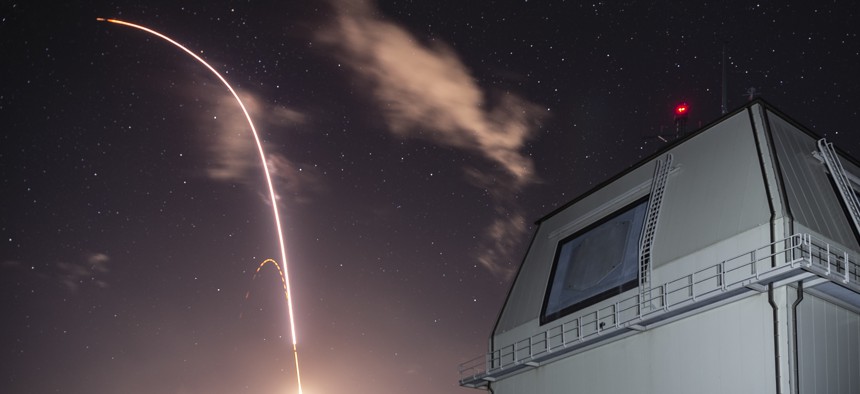
An SM-3 missile interceptor launches in Hawaii. Mark Wright
Test Validates New U.S. Interceptor for European, Japanese Missile Shields
In a first, an SM-3 shot down an intermediate-range ballistic target.
The new interceptor missile that will arm land-based missile defenses in Europe and Japan has passed a key test, the Pentagon said Tuesday.
In a late-night test on Monday, a Raytheon SM-3 IIA interceptor lifted off from Hawaii and shot down a mock intermediate-range missile over the Pacific, Missile Defense Agency officials said.
“It really is a means to the next step and evolution of the system,” Mitch Stevison, vice president of strategic and naval systems at Raytheon Missile Systems, said Tuesday on a call with reporters.
Originally designed as a shipboard weapon, the SM-3 has been adapted for various uses. Monday’s test was the Block IIA variant’s first launch from a land base, its first at an intermediate-range target. It was the first intercept using using tracking data from a remote radar not the radar physically part of the interceptor launch center, according to Raytheon.
“The distance that this threat flew was much more realistic for what they would see in Europe,” Stevison said. He called the test “operationally realistic...and one of the most realistic that I’ve been involved on.”
MDA officials expressed satisfaction with the test.
“Based on preliminary data, the test met its objective, and program officials will continue to evaluate system performance based upon telemetry and other data obtained during the test,” the Missile Defense Agency said in a statement.
Stevison said Pentagon officials would use data from the test to help determine how many IIAs to order.
The IIA variant will eventually be deployed to the Aegis Ashore base in Romania, the under- construction one in Poland, and two sites planned for Japan. The European sites were part of an Obama administration missile defense strategy to defend against Iranian-launched weapons.
The North Korean ICBM tests focused more attention on missile defense, as has Russia’s threats to attack European nations that host American intermediate-range nuclear weapons.







